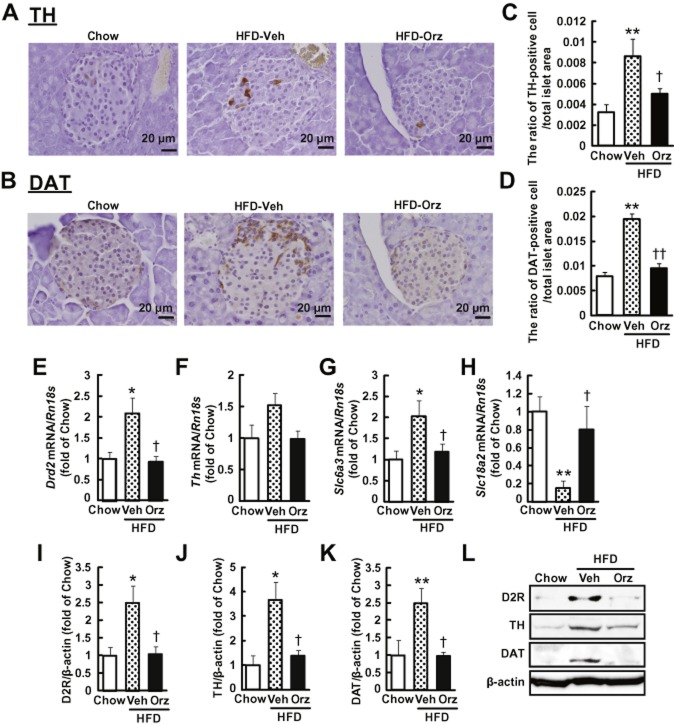Figure 5.
γ-Oryzanol suppresses the expression of molecules involved in D2 receptor signalling in murine pancreatic islets from mice fed HFD. (A, B) IHC analyses of pancreatic islets from HFD-fed mice treated with γ-oryzanol (Orz). Paraffin-embedded sections were stained with anti-TH (A) or anti-DAT (B) antibodies. Scale bar, 20 μm; magnification, ×400. (C, D) The ratios of TH-positive (C) and DAT-positive (D) cell area to the total islet area were attenuated by the treatment with γ-oryzanol in HFD-fed mice (chow, n = 6, HFD-Veh, n = 8, HFD-Orz, n = 8). **P < 0.01 versus chow-fed mice. †P < 0.05, ††P < 0.01 versus vehicle (Veh)-treated HFD-fed mice. (E–H) Expression levels of Drd2 (E), Th (F), Slc6a3 (DAT) (G) and Slc18a2 (VMAT2) (H) mRNAs in pancreatic islets from HFD-fed mice were decreased by γ-oryzanol (Orz; 320 μg·g−1 per body weight per day) (n = 6). The mRNA levels were determined by real-time PCR. The levels were normalized by those of Rn18s (18S rRNA). (I–L) Protein levels of D2 receptors (I), TH (J) and DAT (K) in pancreatic islets from HFD-fed mice were decreased by γ-oryzanol (n = 6). Protein levels were determined by Western blotting. The values were normalized against those of β-actin protein. *P < 0.05, **P < 0.01 versus chow-fed mice. †P < 0.05 versus vehicle (Veh)-treated HFD-fed mice. Data are expressed as means ± SEM.

